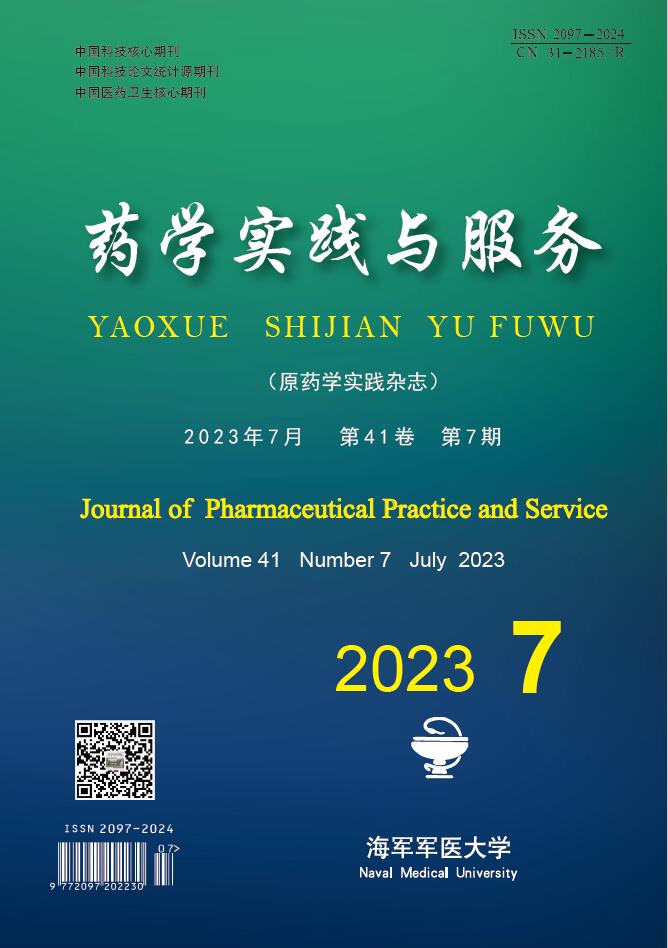-
侵袭性念珠菌病(invasive candidiasis)是院内血液感染的第四大原因[1]。由于各类疾病导致的免疫力低下病人增多,光滑念珠菌(Candida glabrata)的感染率逐年递增,引起败血症的数量也随之增加。除白念珠菌外,光滑念珠菌已成为部分国家和地区侵袭性感染中第二常见的念珠菌种类[2]。光滑念珠菌是一种条件致病菌,它广泛存在于自然界,也在人体皮肤黏膜、消化道寄生。当人体免疫功能降低或皮肤黏膜环境发生改变时,光滑念珠菌即可大量繁殖,引起深部脏器感染。与其他念珠菌相比,光滑念珠菌对于抗真菌药物显著耐受[3],它可以在抗真菌治疗过程中迅速产生耐药性,最终导致治疗失败[4-5]。我国侵袭性真菌耐药监测网(CHIF-NET)2020年统计结果显示,临床常用抗真菌药物氟康唑和伏立康唑对光滑念珠菌的最低抑菌浓度(MIC90)分别32 μg/ml和1 μg/ml。目前治疗光滑念珠菌的药物主要包括广谱三唑类、棘白菌素类以及多烯类抗真菌药。本文对光滑念珠菌的耐药机制进行综述。
-
针对念珠菌属使用最广泛的药物当属唑类抗真菌药物。唑类药物通过作用14ɑ-去甲基化酶系统中的细胞色素P450,使环上氮原子与P450的血红素铁结合,阻碍麦角甾醇生物合成,同时致使其合成前体24-甲烯二氢羊毛甾醇累积,从而使念珠菌细胞膜损伤。麦角甾醇是保证念珠菌细胞膜稳定和流动性的重要成分,而ERG11编码的羊毛甾醇14ɑ-去甲基化酶作为关键酶,催化羊毛甾醇生成麦角甾醇。唑类药物通过结合14ɑ-去甲基化酶,阻碍催化过程,而麦角甾醇不足最终导致细胞膜结构改变,念珠菌增殖减少。
-
ERG11基因突变导致唑类药物作用靶酶羊毛甾醇14ɑ-去甲基化酶的结构发生变化,其与唑类药物的结合位点消失,无法结合,从而产生耐药性。Hull等[6]在临床耐药分离株中发现ERG11基因G315D突变位点,这导致菌株对唑类药物敏感性降低。Zhang等[7]在念珠菌血流分离株中发现6株光滑念珠菌耐药株,并在其中2株中检测到ERG11基因I166S突变位点,其他4株耐药株并未出现ERG11基因的突变,但仍能产生耐药。由此推测,ERG11基因突变或许不能作为光滑念珠菌耐药的主要原因。
-
ERG11基因高表达导致唑类药物的靶酶生成增加,药物无法完全抑制靶酶活性。Upc2A和Rpn4是光滑念珠菌ERG11表达的关键调节因子,RPN4与UPC2A的基因突变是ERG11高表达的主要原因[8-9]。Wang等[10]研究2株耐药分离株,其中1株的CDR1和ERG11高表达,而另1株只有CDR1高表达,尽管验证ERG11高表达确实会导致光滑念珠菌产生耐药,但由于耐药株均存在CDR1高表达,因而ERG11高表达不能作为光滑念珠菌耐药的唯一原因。
-
当麦角甾醇生物合成在缺氧或由于甾醇合成缺陷而受到抑制时,甾醇流入转运蛋白基因(AUS1和TIR3)和麦角甾醇生物合成通路中相关基因(ERG2、ERG3、ERG6等)在真菌细胞中表达明显上调。在低氧条件或唑类作用下,细胞中的AUS1表达增加,通过输入外源性胆固醇和麦角甾醇,可使光滑念珠菌得以存活[11]。
-
与其他念珠菌不同,光滑念珠菌细胞膜上与耐药性相关的外排泵主要是ABC转运蛋白家族(由念珠菌耐药性CDR1、CDR2、SNQ2基因编码),这类外排泵通过水解ATP获得能量,并通过细胞膜主动外排药物。
-
CDR1、CDR2及SNQ2基因高表达导致光滑念珠菌内药物被快速排出,从而对唑类药物产生耐药性。Zhang等[6]在念珠菌血流分离株中发现,光滑念珠菌耐药分离株的CDR1、CDR2基因表达显著增加。Wang等[10]研究两株耐药分离株,发现CDR1基因均高表达。有研究发现[12],CDR1、CDR2在16种耐药分离株中分别有12及8株高表达,且其中有4株耐药株CDR1、CDR2同时高表达;而有8株耐药株SNQ2表达仅相对升高,这可能说明SNQ2没有单独表达或并非主要外排泵,表明这些ABC转运蛋白之间可能存在相互作用。
-
PDR1是ABC转运蛋白家族的上游调节基因。研究发现,Pdr1和Pdr3是酿酒酵母中两种密切相关的蛋白同系物,作用与光滑念珠菌中的Pdr1相似。Yao[13]等在耐药菌株中发现PDR1中的新错义突变位点A848V。Khakhina [14]等发现光滑念珠菌PDR1的作用是酿酒酵母PDR1和PDR3自调节转录作用的结合,PDR1自调节在光滑念珠菌耐药性产生中起重要作用。PDR1基因的功能获得性突变(GOF),会导致CDR1表达上调。Hou[15]等对PDR1多态性进行研究,发现唑类耐药分离株的PDR1多态性比率(14个中的13个,92.9%)明显高于唑类敏感分离株(144个中的28个,19.4%)。
-
真菌耐药性产生大多缘于基因突变。DNA错配修复(MMR)系统纠正DNA聚合酶在DNA复制过程中产生的错误,以及修复由环境因素或内源性因素引起的DNA损伤。MSH2为该修复系统的关键基因之一。
Healey[16]等发现有55%携带MSH2功能丧失的突变(LOF),导致体外和体内抗真菌药物耐药性的加速出现,这些突变在氟康唑处理后更为常见。但也有研究表明MSH2序列与氟康唑耐药性或基因型增加之间无明确关联,在这些研究中MSH2被认为是光滑念珠菌的管家基因,即该基因的多态性可能与遗传复合物的差异有关,而与抗真菌药物耐药性不直接相关[15,17]。尽管如此,不能否认MSH2功能丧失的突变引起错误的不匹配修复,进而参与真菌耐药性的发展,其相关性仍有待进一步研究。
-
β-葡聚糖是念珠菌细胞壁的基本成分,棘白菌素类药物通过抑制β-1,3-葡聚糖的合成,对念珠菌属发挥杀真菌活性。
多项研究表明,FKS基因突变导致其结合位点改变是棘白菌素耐药性产生的主要原因。Wang[10]等研究2株耐药分离株,对FKS测序显示,2种分离株在FKS2中都含有S663P突变且存在4个单核苷酸多态性(SNP),而FKS1则无突变。同时,FKS1和FKS2的表达均上调。Al-Baqsami[18]等在5种耐米卡芬净的分离株中,发现4株分离株FKS2含有非同义(S663P)突变,1株分离株含有FKS2热点-1(HS1)中的三核苷酸缺失(对应于F659;ΔF659)。Pham[19]等在1037株耐棘白菌素光滑念珠菌中进行FKS测序,检测出47株具有FKS突变。其中,检测出12种独特的突变:FKS1中的5种(15株)和FKS2中的7种(35株)。所有突变都发生在HS1中,没有检测到HS2突变。通过以上研究结果,可推测影响光滑念珠菌对棘白菌素易感性的大多数突变位于FKS1 HS1和FKS2 HS1区域,且FKS2的突变多于FKS1。
-
多烯类药物是广泛运用于临床的抗真菌感染的广谱抗菌药。两性霉素B是多烯类的代表药物,通过结合念珠菌细胞膜上的麦角甾醇,形成孔道,以改变念珠菌细胞膜通透性从而使念珠菌死亡。
-
真菌能够自身合成甾醇中间体完成代谢,但麦角甾醇缺乏,导致两性霉素B无作用靶点。Hull等[6]在多种临床耐药分离株中发现CG156分离株内仅可检测到14α-甲基化甾醇中间体这一种甾醇,即这种分离株内缺乏麦角甾醇,但该耐药株仍可以在没有外源性供应甾醇的情况下,用14α-甲基化甾醇中间体合成细胞所需的甾醇。
-
由ERG6中密码子Tyr192、Trp286或Leu341无义突变导致Erg6蛋白的过早终止;由ERG2中含有的G122S和G119S无义突变导致Erg2蛋白功能受损,最终均导致突变株细胞膜缺乏麦角甾醇,进而破坏细胞膜通透性和流动性[20-23]。
-
综上所述,光滑念珠菌作为临床上较为重要的致病菌之一,由于抗真菌药物种类有限,临床应用重复率高,导致的耐药问题日益严重。因此,一方面需要临床合理用药、联合用药,尽量避免耐药性的产生;另一方面,需要研发新型抗真菌药物。有研究表明[24-28],阿魏酸与卡泊芬净,薄荷醇、百里酚、替加环素、绒毛钩藤不溶性成分与唑类药物的协同作用,通过损伤念珠菌生物被膜等方式,可以有效降低唑类耐药菌的MIC。也有研究开辟新的思路,寻找新的药物靶点:合成的铋纳米颗粒可以潜在地用于改善氧化应激和各种微生物感染,对念珠菌病病例有强大抗真菌能力[29];4种双鸟胍衍生物(BG1-BG4)对光滑念珠菌和白念珠菌的MIC在2~15.6 μg/ml之间,其中BG3作用于DNA,扰乱复制转录过程,导致在细胞质膜外层的磷脂酰丝氨酸暴露,半胱氨酸蛋白酶活化,促进真菌细胞凋亡[30]。药物研发和探索是漫长的过程,需要一代代人的验证和实践,但可以预见,在不久的将来,这些药物最终会有一部分应用于临床实践中,为缓解临床耐药问题提供新的选择。
Research progress on drug resistance mechanism of Candida glabrata
doi: 10.12206/j.issn.2097-2024.202202050
- Received Date: 2022-02-21
- Rev Recd Date: 2022-07-11
- Publish Date: 2023-07-25
-
Key words:
- Candida glabrata /
- azole /
- echinocandin /
- polyene /
- drug resistance
Abstract: With the increasing proportion of Candida glabrata in patients with candidiasis, C. glabrata has become one of the most common pathogenic Candida in clinical practice. There are limited types of antifungal drugs, and the consequent problem of drug resistance is severely increasing, which brings difficulties to clinical treatment. The resistance mechanisms of C. glabrata to azoles, echinocandins and polyenes were reviewed in this paper.
| Citation: | XU Yilan, YAN Lan. Research progress on drug resistance mechanism of Candida glabrata[J]. Journal of Pharmaceutical Practice and Service, 2023, 41(7): 393-395, 432. doi: 10.12206/j.issn.2097-2024.202202050 |








 DownLoad:
DownLoad: